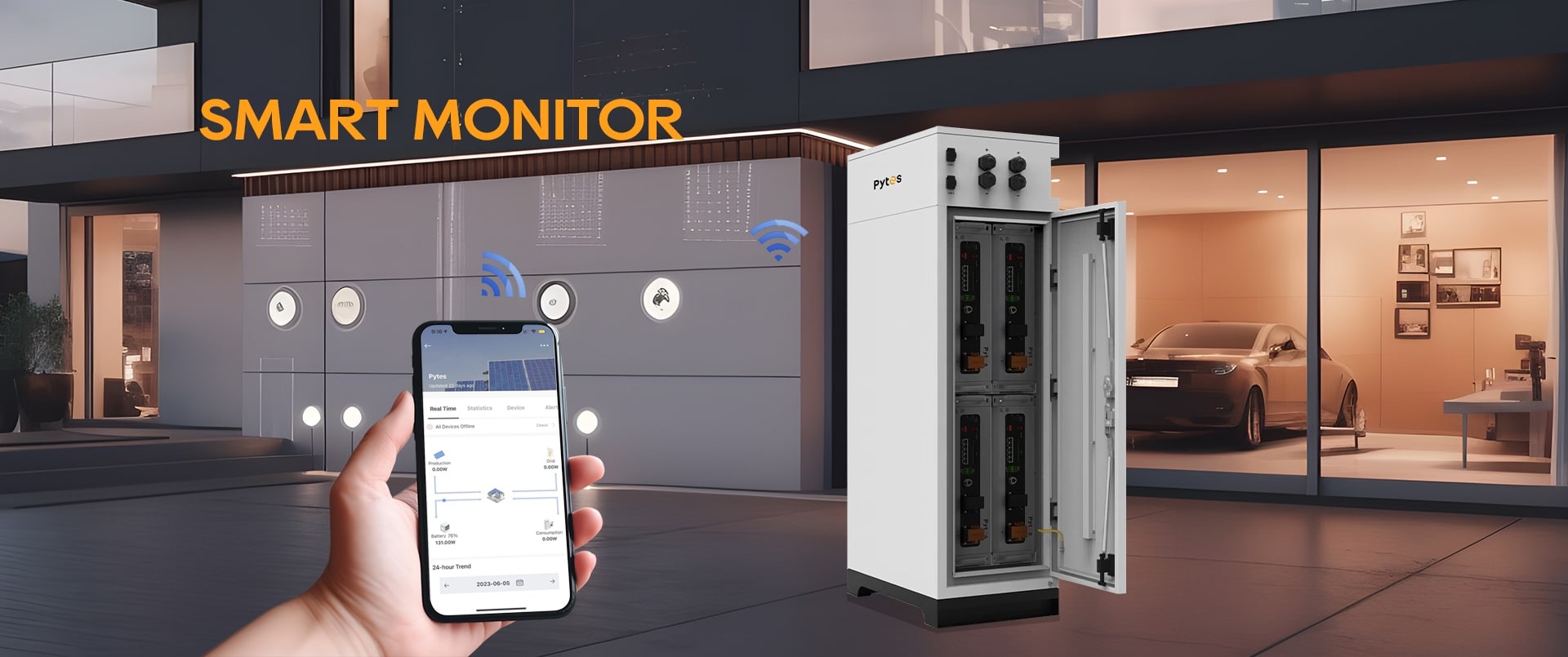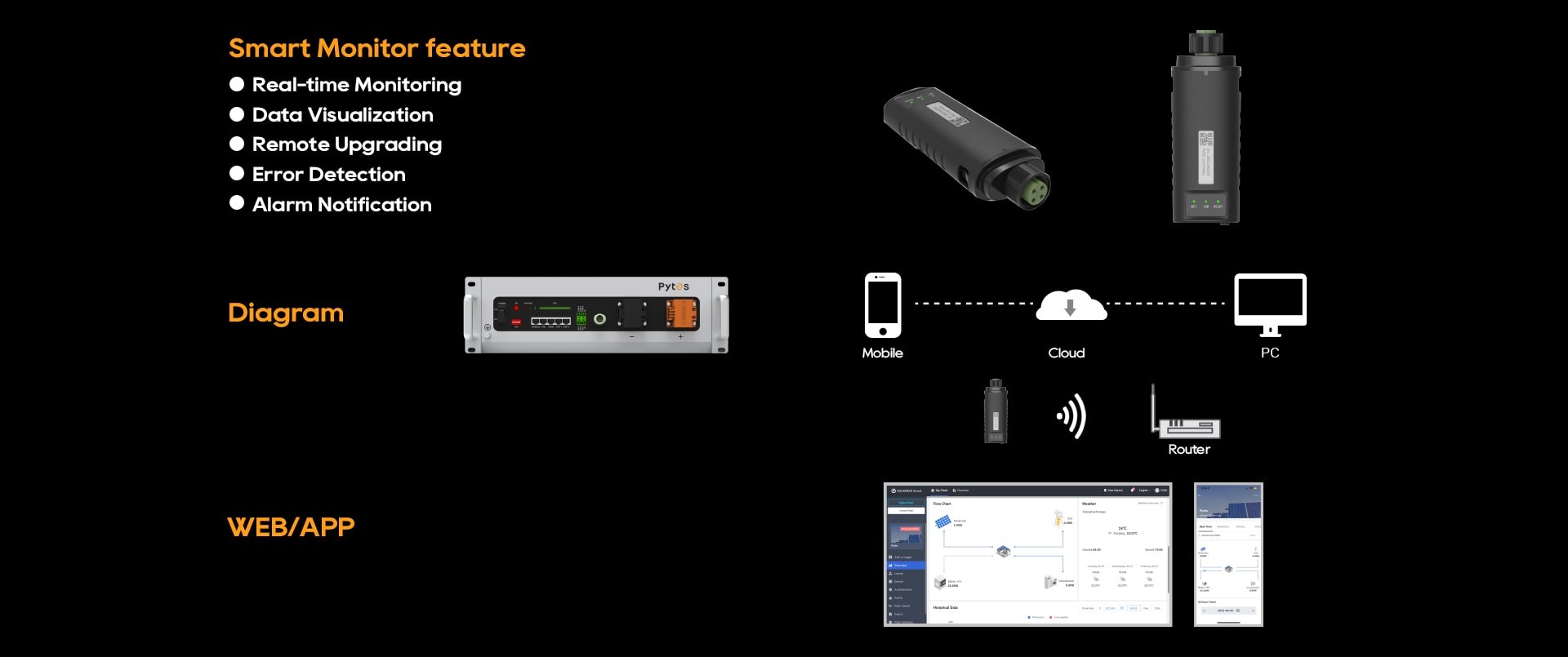How Many LFP Batteries Do you Need for My Home?
There are two important considerations.
Firstly, you need to calculate the number of the main home appliances and the total energy capacity the appliance will consume. Secondly, you need to figure out how long will these home appliances run? As to which brand to buy, our recommendation for LFP battery is Pytes V5°,it is a cutting-edging solar battery for homeowners to have. The Nominal Voltage of the battery is 51.2V, the Nominal Capacity is 100AH, the Nominal Energy is 5.12kwh.
To calculate how many batteries you will need, use this simple formula:
Total appliances watts/kilowatts = battery size
Batteries are measured in amps, so to find its watt equivalent:
Watts / volts = amps
Amps x volts = watts
Battery Power For House Calculation Example

There are some important considerations we must take into account. Firstly, it is not practical to solely rely on batteries to power an entire household for an extended period. Nevertheless, they can be utilized to operate appliances in your home for a limited time during a power failure. In the scenario we are discussing, we are assuming that you only want to power essential appliances, such as the following examples:

The energy consumption for example home is 12.38kwh, as for the single battery of V5° is 5.12kwh so that the example home needs 3 batteries to run the essential appliances.
The amps @120VAC is 103.

How Long Will My Batteries Last?
The running time for your appliances determines how many V5° batteries are needed. Once you know the runtime you will know exactly what batteries to buy and how many.
To find out how long the battery will last:
Battery capacity / total wattage = appliance runtime
If you want to run a 5000 watt load for about four hours, you need four V5° batteries. Four batteries are equal to 20480 watts.
5120 x 4 = 20480
20480 / 5000 = 4.096
Going back to our example earlier, your appliances power consumption is 12.38kwh. One battery is 5120 watts so it is insufficient. With three V5° batteries, you have enough power to keep your appliances running.
If you want your appliances to run for longer periods, just add more batteries or reduce the critical load. If you add more to the load the runtime will drop.
Adding a 1800 watt Dishwasher for instance, brings the total wattage to over 14.18 kwh.
20480/ 14180 = 1.4
With the formula here, you can estimate how many batteries are needed for a particular runtime.
We are using 100ah LFP batteries in these calculations, but you can try other sizes. 100ah LFP is ideal for homes though because of its capacity. But if you can get a large battery, you can run more appliances and devices.

Can I Utilize Solar Panels Together with My Battery Bank?
Certainly, you can incorporate solar panels with batteries, which is the setup for most off-grid homes. With a sufficiently large solar array, you should have no trouble operating your appliances.
The number of solar panels needed depends on the load. For a 2.5kwh load, nine 300 watt solar panels will be required if using all appliances at once, or eight panels if only powering a refrigerator and lights.
The 300W Solar Panel Kit is recommended for its value and efficiency. Running solar panels in the morning helps conserve battery power for use at night, but this is only feasible in off-grid setups. Grid-tied systems automatically shut off solar panels during a power outage for safety.
If a battery bank is involved, factor in total wattage plus reserve power (a minimum of 20%), as well as the inverter and charge controller. It’s important to note that while solar panels are optional, you’ll need an inverter and charge controller to power appliances with a battery bank. For those off the grid, a solar array may already be installed. Setting up a battery backup system can be complicated and costly, but there are ways to maximize its value and effectiveness. The first step is identifying the essential appliances for your household, such as a refrigerator, heater, window AC, lights, laptop charger, and TV, and determining their maximum/peak wattage and running wattage. It’s crucial to have reserve power available, especially for appliances with high starting wattage requirements. Test the battery bank regularly and ensure it is properly maintained to avoid malfunctions when needed. Ultimately, it is crucial to consider which essential appliances you require and for how long. With basic appliances, it is entirely possible to use 100ah LFP batteries to power your home during emergencies.


